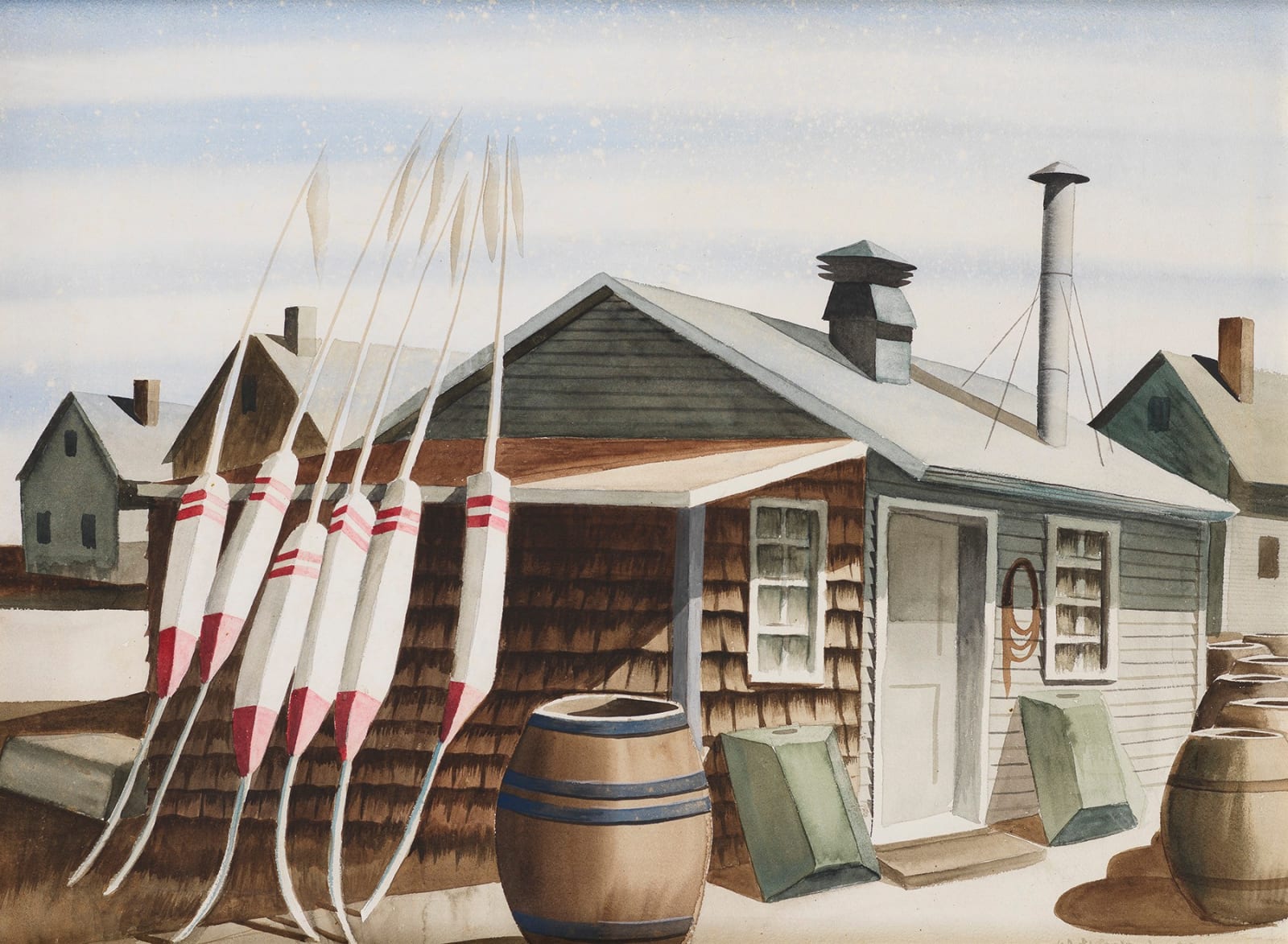Edmund Lewandowski American, 1914-1998
Net Markers, 1937
Watercolor on paper
16 1/2 x 22 1/2 inches
41.9 x 57.1 cm
41.9 x 57.1 cm
Signed and dated at lower right: E. D. Lewandowski 1937
Edmund Lewandowski (1914–1998) Edmund Lewandowski was an important voice in the interwar Precisionist movement, before developing the magical realist themes of his work into an explicit surrealism all his own....
Edmund Lewandowski (1914–1998)
Edmund Lewandowski was an important voice in the interwar Precisionist movement, before developing the magical realist themes of his work into an explicit surrealism all his own. He worked in the 1930s in illustration and advertising and joined Edith Halpert’s Downtown Gallery roster in 1936. The Downtown Gallery was a hotbed of Precisionism, including George Ault, Ralston Crawford, Georgia O’Keeffe, and Charles Sheeler. Lewandowski shared with Crawford the distinction of having his career interrupted by service in the military during World War II. For his part, Lewandowski spent a portion of the war making murals, and later designed camouflage. Recent writers have described his work as “heroicizing,” [1] but in the 1940s, the otherworldly clarity of Lewandowski’s work won him inclusion in the ground-breaking Realists and Magic Realists exhibition at the Museum of Modern Art.
[1] Ken Johnson, “American Identity—Figurative Painting and Sculpture, 1930–1945,” The New York Times, July 11, 2003, p. E31.
Edmund Lewandowski was an important voice in the interwar Precisionist movement, before developing the magical realist themes of his work into an explicit surrealism all his own. He worked in the 1930s in illustration and advertising and joined Edith Halpert’s Downtown Gallery roster in 1936. The Downtown Gallery was a hotbed of Precisionism, including George Ault, Ralston Crawford, Georgia O’Keeffe, and Charles Sheeler. Lewandowski shared with Crawford the distinction of having his career interrupted by service in the military during World War II. For his part, Lewandowski spent a portion of the war making murals, and later designed camouflage. Recent writers have described his work as “heroicizing,” [1] but in the 1940s, the otherworldly clarity of Lewandowski’s work won him inclusion in the ground-breaking Realists and Magic Realists exhibition at the Museum of Modern Art.
[1] Ken Johnson, “American Identity—Figurative Painting and Sculpture, 1930–1945,” The New York Times, July 11, 2003, p. E31.
Provenance
[Franklin Riehlman Fine Art, New York]; toPrivate collection, until the present
Exhibitions
Winthrop University Gallery, Rock Hill, South Carolina; Flint Intistute of Arts; Georgia Museum of Art, and Montgomery Museum of Fine Arts, Edmund Lewandowski: Precisionism and Beyond, 2010-2011, no. 94Subscribe to our mailing list to receive updates from the gallery
* denotes required fields
We will process the personal data you have supplied in accordance with our privacy policy (available on request). You can unsubscribe or change your preferences at any time by clicking the link in our emails.

